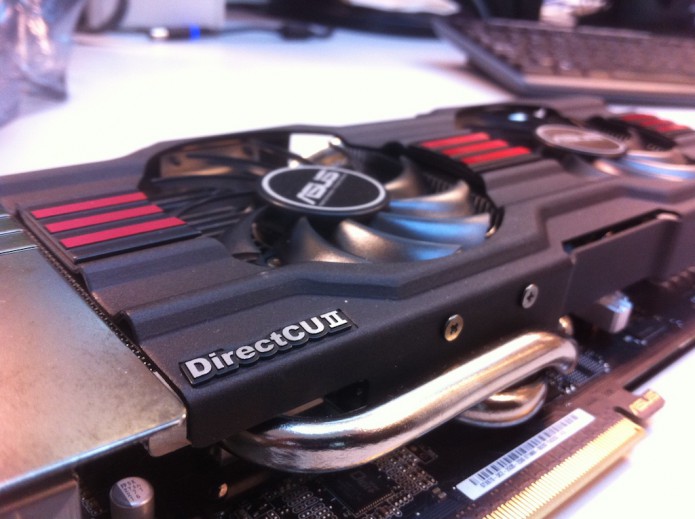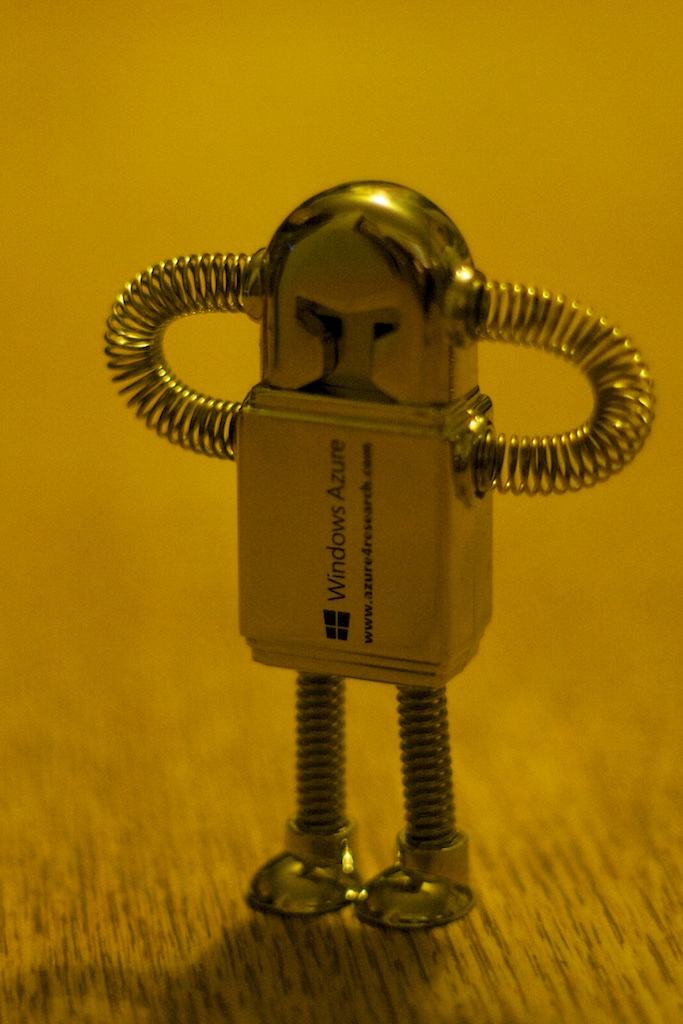I’ve just returned from the of the in San Francisco. With around 7,000 scientists, multiple simultaneous sessions of talks and nearly a thousand posters every day, it is a large event, but not as big as many. Even so, working out what talks and posters you might want to see is a difficult task. Of course, you might not wish to prepare a schedule as this is somewhat of a personal thing, but I find it helpful just to know how the days will ebb and flow – if today is busy, will tomorrow be a bit quieter and let me recover? If I bump into someone I want to talk to, what will I miss? What posters might be interesting on the other side of the exhibition hall? I emphasise that attending interesting talks and seeing posters are not the only things one does at these conferences – talking to people is useful and fun too – but having that side of it organised does, I find, take your mind off “the next thing�?.
Although this was my fifth , I feel it was the first time I was adequately organised, and believe me, I’ve been trying. Before I describe what I found worked for me this time, I’ll quickly describe the options available in the order you encounter them in the run-up to the meeting itself.
Options
A useful tool this. You can search by presenter, keyword etc and then add selected talks and posters to your itinerary that is saved against your user. I usually search by both scientific labs (i.e. surname of the group leader) and keywords in the title or abstract. Worth starting several weeks in advance and coming back to as you tend to remember topics or groups you’d forgotten the first time. Better still, you can download your saved itinerary into your calendary program of choice. Unfortunately this is poorly implemented. For example, say you’ve picked out 30 posters on one day (very easy to do). The planner creates an “appointment�? for every single poster session at the same time in your calendar. Then imagine you have a default alarm setting, as many people do, and finally picture the mayhem when your smart phone / laptop / tablet tries alerting you to 30 simultaneous events. The talks don’t fare much better: even if you only pick out one 15 minute talk the planner puts the whole 2 hour session into your calendar. Not helpful.
. On the first day of the conference you get a copy of the program as a soft-bound book, but this list is in chronological order so we haven’t got the book in our hands just yet. But you can see the program before you start travelling as an . Unfortunately this is one of those “worst-of-both-worlds�? things: it is on the screen of my computer but it wants me to flick the pages? And then it makes a flicking noise to show the pages are going turned over? In other words, the UI slows you down in an effort to make you think it is a book. I would love to know if anyone actually used this in the intended way. Fortunately you could download the whole book as a PDF, although finding the correct button took a little searching.
An innovation this year. It let you search for sessions on your device and “check in�? in-a -social-way to show what session you were in. This boiled down to me seeing what sessions people I didn’t know where in. Not very helpful. The idea is good, but it wasn’t written from the point of view of someone trying to navigate the myriad of sessions and thousands of posters whilst heavily jetlagged. Didn’t use it much so won’t write any more.
4. Paper version program. The old standby. Even without the abstracts it weighs in at a hefty 298 pages – some laptops are lighter. The traditional approach to meeting planning is to leaf through the program at breakfast in your hotel drawing circles around the talks you want to go to. I wouldn’t to try and go through the posters this way though. Solid and dependable but you don’t get until you register at the convention centre so you have to be pretty speedy if you want to develop a schedule more than a day in advance.
5. Going with the flow. Perhaps the easiest method: just follow other people who have similar interests to you, or find the room where the clapping seems loudest. Not very reliable but requires little in the way of preparation. Maybe in the coming years social media, like Twitter, will allow you gauge where to go, in real-time, as the conference progresses. Bizarrely (in my mind) most scientists are extremely conservative when it comes to social media and so, despite having a hashtag (#bps14) and , there were only 518 tweets making use of the hashtag (and exactly half of these came from three accounts). On average this is a single tweet for every 13 scientists in attendance over five days of the conference. For social media such as Twitter to provide an evolving picture of the conference, for example to show which talks appear especially interesting, you need a rapidly updating timeline, say a tweet a minute, which works out at 600 tweets a day, or 3,000 tweets over the course of the conference. So I’d say we are still someway from any kind of social media “tipping point�? that would let you go with the flow.
My recipe
Again, I stress this is what worked for me this year so probably won’t work for you, and maybe won’t even work for me another year, but hopefully will give you some ideas or get you thinking about how to organise an itinerary.
(a). Search the online itinerary planner in advance. I make a list on a piece of paper of keywords and groups that I am interested in. Search on each term and add appropriate talks and posters to your itinerary – be selective and don’t just add all the posters from one group that you admire. Put a line through each term when you’ve searched for it! Come back to your list several times as you’ll find you come up with new groups or keywords to search on. Don’t add it your calendar! Instead, save the list, perhaps as a PDF.
(b). Search through the program. Download the program book as a PDF, don’t use the online version. Now go through the talks day-by-day and highlight any that look interesting (this is especially easy on an iPad using an App such as ). Don’t worry if you highlight a few that are in your itinerary.
(c). Add talks to your calendar manually (see right). This takes a bit of time, and is a bit dull (and so is perfect for doing on the aeroplane). Go through the program and add talks to your calendar (iCal, Google Calendar, Outlook etc), remembering to include the room number. You can copy the text off the program PDF and paste it into your calendar to cut down on typing. Setting a default alarm can be helpful here as it can easily take 5 minutes to get from one room to another. Now go through the saved version of your online itinerary and add in any talks you’ve missed. It is also helpful to make a list of the posters you’ve picked out for each day at the same time so you can walk from one to the other in the Exhibition Hall.
(d). Look for patterns. Chances are you’ll have quite a few clashes. You’ll also find that you’ve picked out say 3 talks from a session of 8 talks in total. If so, it might be worth getting a coffee and staying for the whole session. Or you might choose to duck out and see another talk in another session and then come back. I prefer to wait until the day before deciding exactly which sessions to hit and how to deal with my clashes as what I decide will depend on where other people are going and, crucially, just how far it is between Room X and Room Y which you won’t find out until you are in the Convention Centre itself.
(e). Go with the flow in an organised way. Having put in this work to organise my schedule and put it in my calendar on my iPad, I was able to go from talk to talk without feeling a tiny bit panicked that I was missing something a crucial session. Having a list of poster numbers for each day was hugely helpful too as a cluster of posters together would indicate that that section would be interesting. For me the crucial point is that all this organisation freed me up during the conference. For example I bumped into several people as I was leaving a session but because I had a good idea of what I had next and how interesting it was I was able to decide whether to talk to them, perhaps over a coffee, or whether I really should hit that talk. It also meant I recognised that Monday, for example, was going to be a really tough day but Tuesday would be easier and then Wednesday, whilst shorter, was also going to be busy. In the end I left the big book in my hotel and just carried around my iPad which was much easier. I guess the final things I found helpful are: if you think of something or meet someone write it down immediately. You are busy, tired and probably also jetlagged – chances are you will not remember that idea, person or reference in a days time, let alone when back in the lab. Personally, I use for everything as my notes are synced across all my devices so if, for example, the battery on my iPad runs out, I just swap to the laptop or whatever I have with me.
That was my recipe this year at the . It only took me five goes to get there (and some improvements in technology since I first went) but I feel I learnt a lot more, met a lot more people and had a lot more ideas than the previous four times I have attended. Take my recipe with a pinch of salt as it might not work for you. I am sure though that attending these large meetings can be made to be more manageable; you just have to find what works for you.


